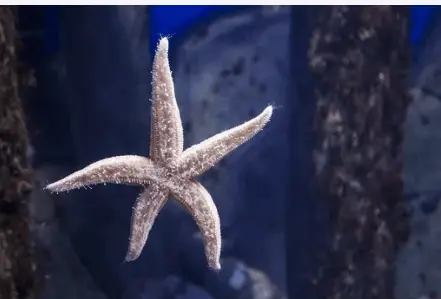
Activity of text interpretation, aimed at students in the sixth year of elementary school, about the stars that live in the sea. There are about two thousand species of the Asteroidea Class in the oceans, invertebrate animals popularly known as starfish. Let's get to know them better? So, read the text carefully! Then answer the various interpretative questions proposed!
You can download this text comprehension activity in an editable Word template, ready to print to PDF, as well as the completed activity.
Download this text interpretation exercise from:
SCHOOL: DATE:
PROF: CLASS:
NAME:
Read:
Have you ever thought how boring a starless sky would be? Nights with the lonely moon up there… These stars come and go due to natural phenomena, and we can't do anything to prevent them. But here, on our planet, we can help a kind of star that is disappearing… In the sea!
There are about two thousand species of the Asteroidea Class in the oceans, invertebrate animals popularly known as starfish. THE Oreaster reticulatus is a species that needs your special attention.
This starfish can be found along the entire Brazilian coast, inhabiting the sandy bottom of the ocean, in regions up to 70 meters deep. It likes to feed on micro-organisms, organic matter that is deposited in the underwater soil, as well as sponges, sea urchins and even other starfish.
Despite living in a very large area, populations of this species have been suffering from human activities. The pollution released into the sea damages the health of this starfish. Also, in many regions, people collect these stars to decorate their aquariums or use the dried body of these animals as decoration. All these actions can make the species disappear from our shores forever.
To guarantee the survival of the starfish, it is necessary to reduce the pollution of the oceans. But shouldn't this be thought of by adults? You should, but you can also do your part and not collect or buy these live or dead marine animals. When you go to the beach, leave the marine animals alone and have fun making sand castles and diving in the sea!
Henrique Caldeira Costa. “Ciência Hoje das Crianças” magazine. Edition 242. Available in: .

Question 1 - In the passage “These stars appear and disappear due to natural phenomena, and we can't do anything to avoid it.”, the author of the text refers:
( ) the moon.
( ) the stars.
( ) to sea stars.
Question 2 - In the segment “There are about two thousand species of the Asteroidea Class in the oceans […]”, the author of the text quotes:
( ) the exact number of species of the Asteroidea Class in the oceans.
( ) the hypothetical amount of Asteroidea Class species in the oceans.
( ) the approximate number of species of the Class Asteroidea in the oceans.
Question 3 - Reread this text fragment:
“It likes to feed on micro-organisms, organic matter that is deposited in the underwater soil, as well as sponges, urchins and even other starfish.”
The term "and" indicates:
( ) sum.
( ) contrast.
( ) conclusion.
Question 4 – The author of the text exposes the actions that can lead to the disappearance of starfish from beaches. Identify them:
Question 5 - In the period "For to guarantee the survival of the starfish, it is necessary to reduce the pollution of the oceans.”, the highlighted word expresses:
( ) end.
( ) mode.
( ) destiny.
Question 6 – In "You must, yes, but you can also do your part and not collect or buy these marine animals alive or dead.", the author of the text addresses:
( ) to adults.
( ) the children.
( ) to adults and children.
Question 7 – The excerpt “When you go to the beach, leave the marine animals alone […]” is:
( ) a wish.
( ) an advice.
( ) an orientation.
Per Denyse Lage Fonseca
Graduated in Languages and specialist in distance education.
 report this ad
report this ad